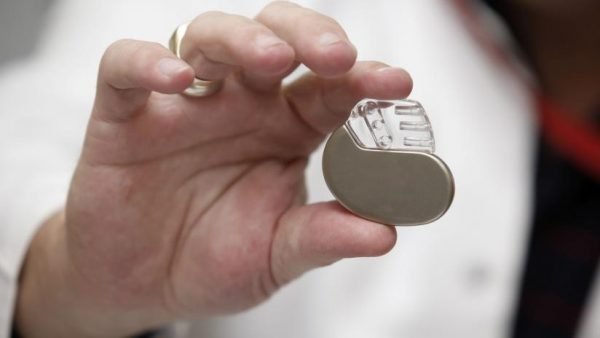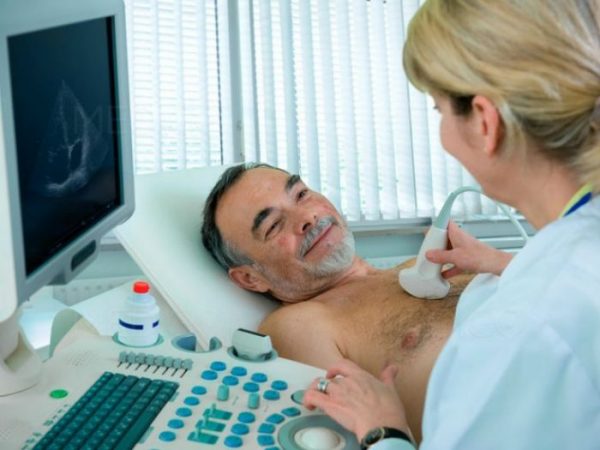ABOUT PACEMAKER IMPLANTATION
Pacemaker implantation is a procedure performed to implant a pacemaker, which is an electrical device used to regulate the body’s heartbeat. A pacemaker is required by patients who have an irregular heartbeat or by patients who have damage to their heart muscle as a result of a heart attack.
The heart is comprised of 4 chambers, 2 upper chambers that include the right and left atria and 2 lower chambers that include the right and left ventricles. The heart chambers function to pump blood around the body and are controlled by electrical signals. The electrical signals begin in the SA (sinoatrial) node in right atria, causing the atria to contract. The electrical signal then travels to the AV node, an area located between the atria and ventricle, which slowly releases the signal into the ventricle, which then contracts.
A pacemaker is required when the electrical signals controlling the heart become disrupted. It replaces the body’s natural pacemaker by regulating the electrical signals. The pacemaker will monitor the heartbeat and has sensors to indicate when the heartbeat needs to be adjusted. Some patients may require a pacemaker temporarily to regulate a slow heartbeat after having a heart attack and once recovered, the pacemaker is no longer needed. However, many patients require a permanent pacemaker to regulate their heartbeat.
The pacemaker is a small metal device that weighs between 20 and 50g and is implanted under the skin on the chest below the collarbone, near the heart and connected to the heart with leads. There are 3 different types of pacemakers, single-chamber pacemakers, dual-chamber pacemakers, and biventricular pacemakers. The difference between the pacemakers is how many leads they have connecting the heart to the pacemaker. Single-chamber pacemakers have one lead connecting the pacemaker to either the right atrium or the right ventricle. Dual-chamber pacemakers have two leads connecting the pacemaker to the right atrium and the left ventricle. Biventricular pacemakers have 3 leads connecting the pacemaker to the right and left ventricle and the right atrium.
The procedure is performed under a local anesthetic and patients will usually be discharged from the hospital the day after the procedure.
Recommended for
- Atrial fibrillation
- Sick sinus syndrome
- Bradycardia
- Heart block
TIME REQUIREMENTS
- Number of days in hospital: 1 – 2 days.
Patients will usually require 1 to 2 nights stay in the hospital to monitor their heart rhythm.
- Average length of stay abroad: 3 – 7 days.

COMPARE PACEMAKER IMPLANTATION PRICES AROUND THE WORLD
HOW TO FIND QUALITY TREATMENT ABROAD
BEFORE PACEMAKER IMPLANTATION ABROAD
Patients will meet with the cardiologist to discuss the pacemaker implantation surgery. The cardiologist will have assessed the patient’s medical history and will discuss which type of pacemaker is best for the patient.
Patients should prepare any questions that they may have before the consultation, to ensure that they understand the surgery and to have any concerns they may have, addressed by the cardiologist. It is also advisable to arrange for a friend or family member to be there when discharged, to accompany the patient back to the hotel.
HOW IS IT PERFORMED
The patient is administered with a local anesthetic so that they will not feel pain during the surgery. Transvenous implantation is the most commonly used surgical method to implant a pacemaker.
The surgeon will begin by making a 5 to 6cm incision in the upper chest, below the collarbone near the heart to access a vein, through which, the 2 leads are inserted into the heart (the amount of leads used depends on type of pacemaker being used).
A small pocket is then created in the skin where the pacemaker is inserted. The leads are then connected to the pacemaker and the pacemaker is tested to ensure it functions correctly. The incision site is then closed with sutures.
Anesthesia
Local anesthetic
Procedure duration
The Pacemaker Implantation takes 1 to 2 hours.

WHAT TO EXPECT AFTER PACEMAKER IMPLANTATION
Post procedure care
After the surgery, the patient’s heart rhythm will be closely monitored and a chest X-ray will be taken to ensure that the lungs are functioning correctly and that the pacemaker is correctly in position.
Before being discharged from the hospital, patients will be issued with a card that states the make and model of the pacemaker they have been fitted with, and this card should always be carried by the patient.
Possible discomfort
Patients may experience pain and discomfort in the first 48 hours after the surgery, however the doctor will likely prescribe pain medication to help ease pain.
IMPORTANT THINGS TO KNOW ABOUT PACEMAKER IMPLANTATION
Potential risks
-
Blood clots
- Infection
- Pacemaker malfunction














